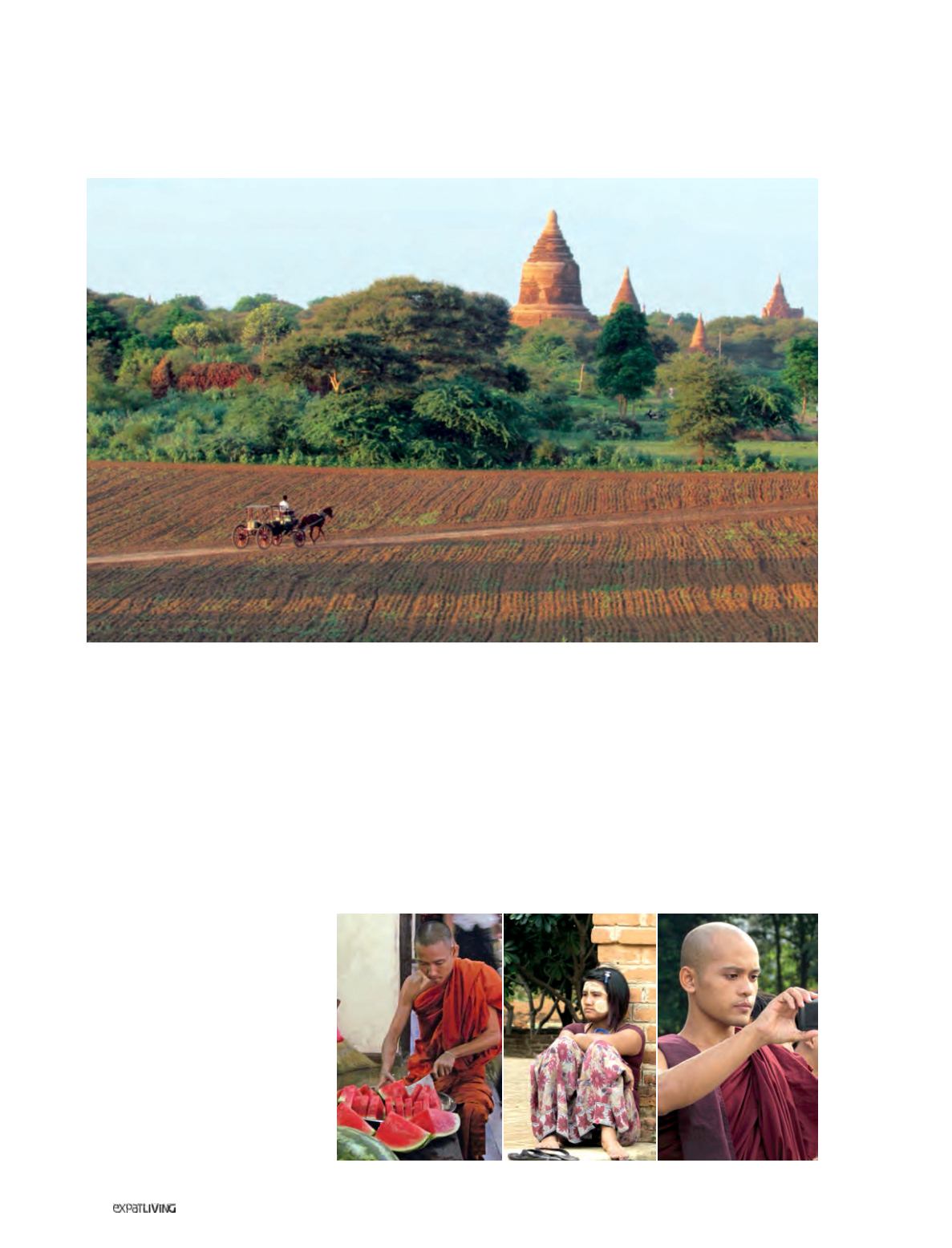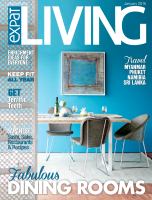

TRAVEL
216
January15
The capital
In
Yangon
we stayed at the
Sule
Shangri-La
, centrally located just across
the road from the Bogyoke Market. This
market has everything for locals and
tourists alike, and often cheaper prices
on jewellery and crafts than we found in
the villages where they are made.
The city has some lovely tree-lined
streets, two big lakes and an interesting
mix of Indian and Chinese architecture.
Motorbikes have been banned in the city
centre since 2002, so there is a leisurely
feel to the place. New money flowing in
is bringing big changes though: a huge
multi-storey commercial development
is opening soon on Inya Lake, opposite
Aung San Suu Kyi’s house, and more
cars are on the roads every day.
The food we had in Yangon and
Myanmar in general was a real surprise
– very tasty, with an emphasis on fish
(in tomato-tamarind based sauces),
tempura, stir-fried vegetables and
curries. The further north we travelled,
the more the cuisine became Chinese-
influenced, with leaf-wrapped dumplings
and sesame flavours.
On Day 2, we visited an orphanage
run by a monastery, where we had the
chance to serve lunch to the children.
Country Holidays had organised for us
to contribute the meat dish and fresh
fruit for the meal, and we took lots of
stationery items and small gifts for
them to give out to the children later.
Some of the boys were studying to go to
university and loved talking and playing
soccer with our kids.
The Shwedagon Pagoda is the
cultural highlight of Yangon. It’s a
huge, dazzling complex on top of a
hill, with lots of gold and as many as
68 stupas and pagodas, all paid for by
donations. The central pagoda (being
upgraded while we were there) is 110
metres tall, and covered in hundreds of
gold plates and over 4,500 diamonds,
including a 75-carat diamond in the top;
needless to say, it’s very impressive. We
took the easy walk around the terrace,
where locals enjoy bringing picnics
and watching the sun set, beneath
thousands of crows circling the spires.



















